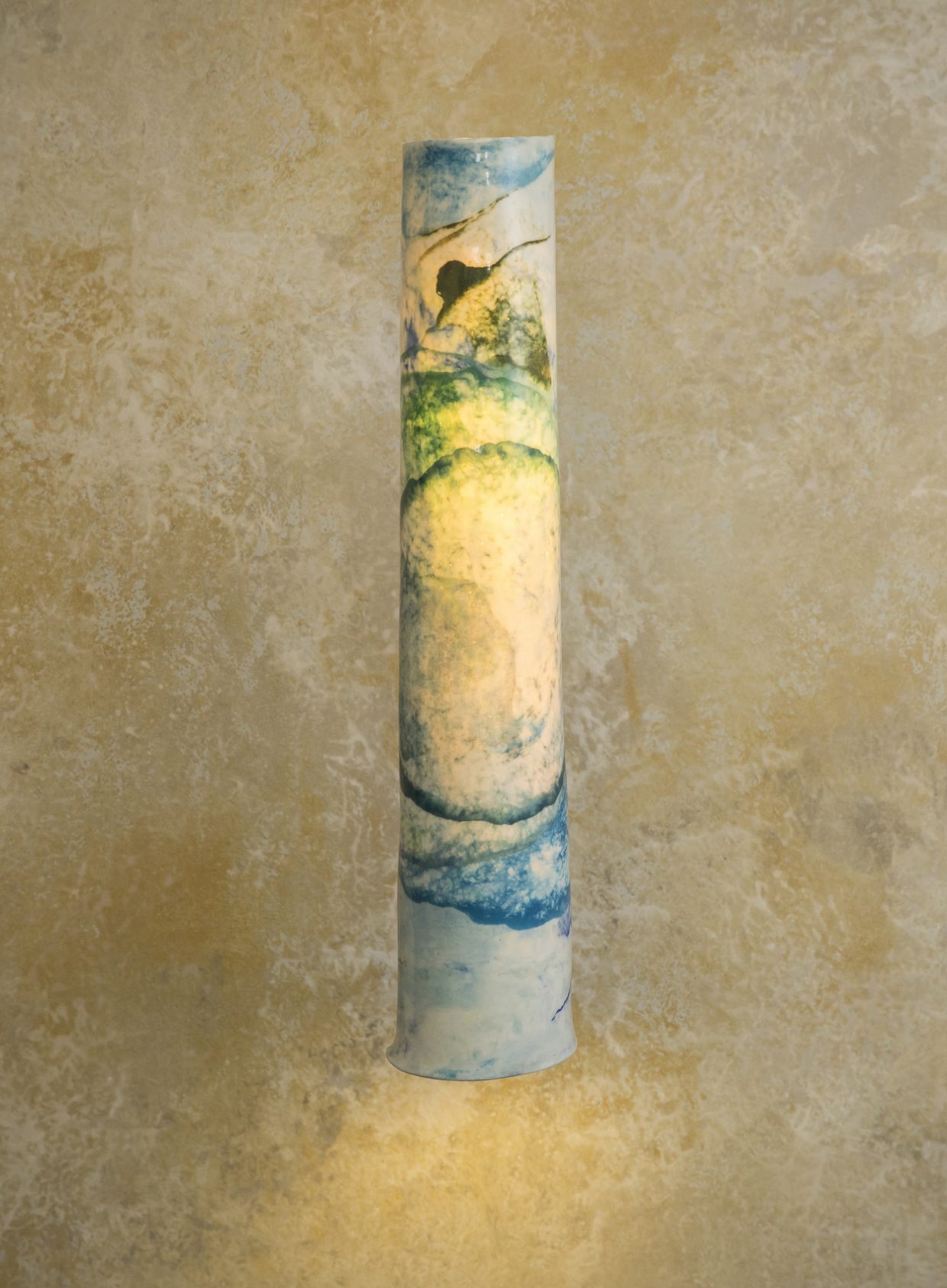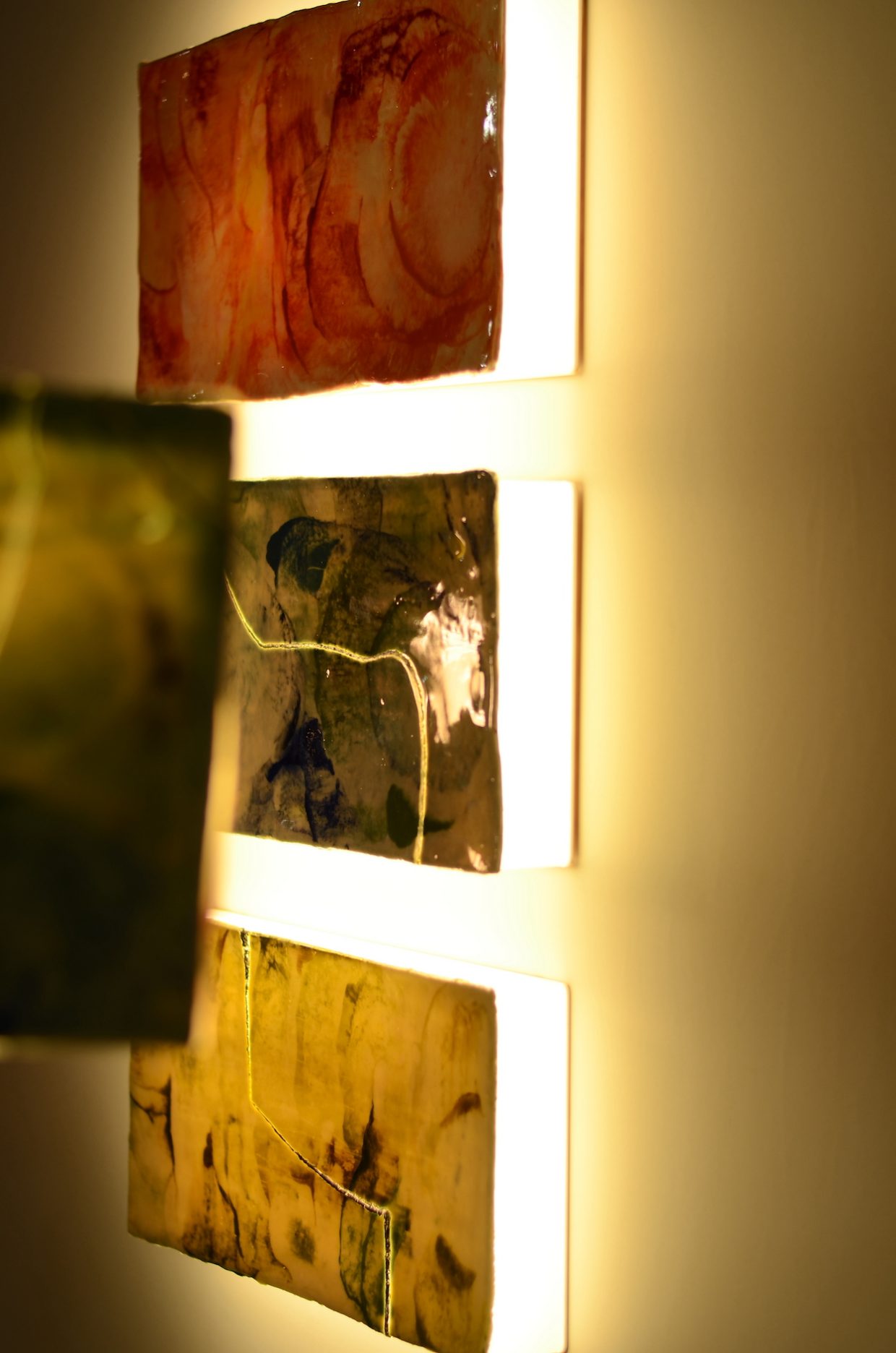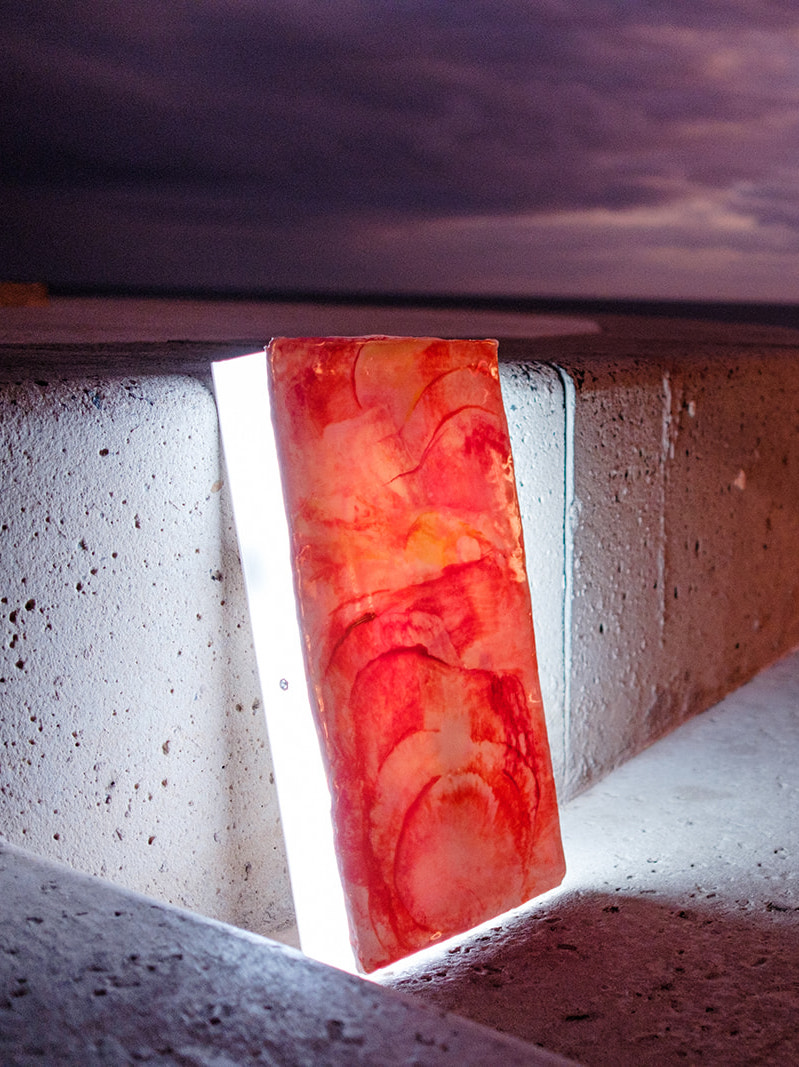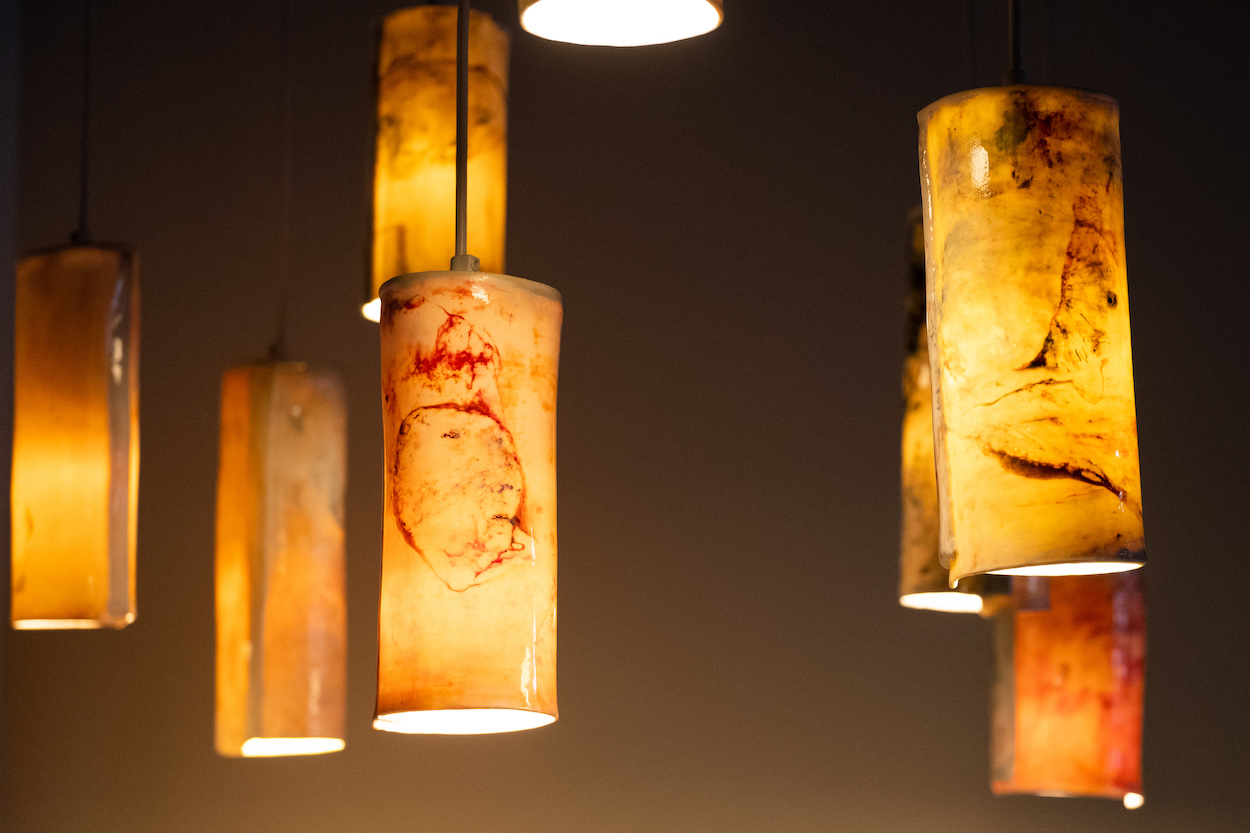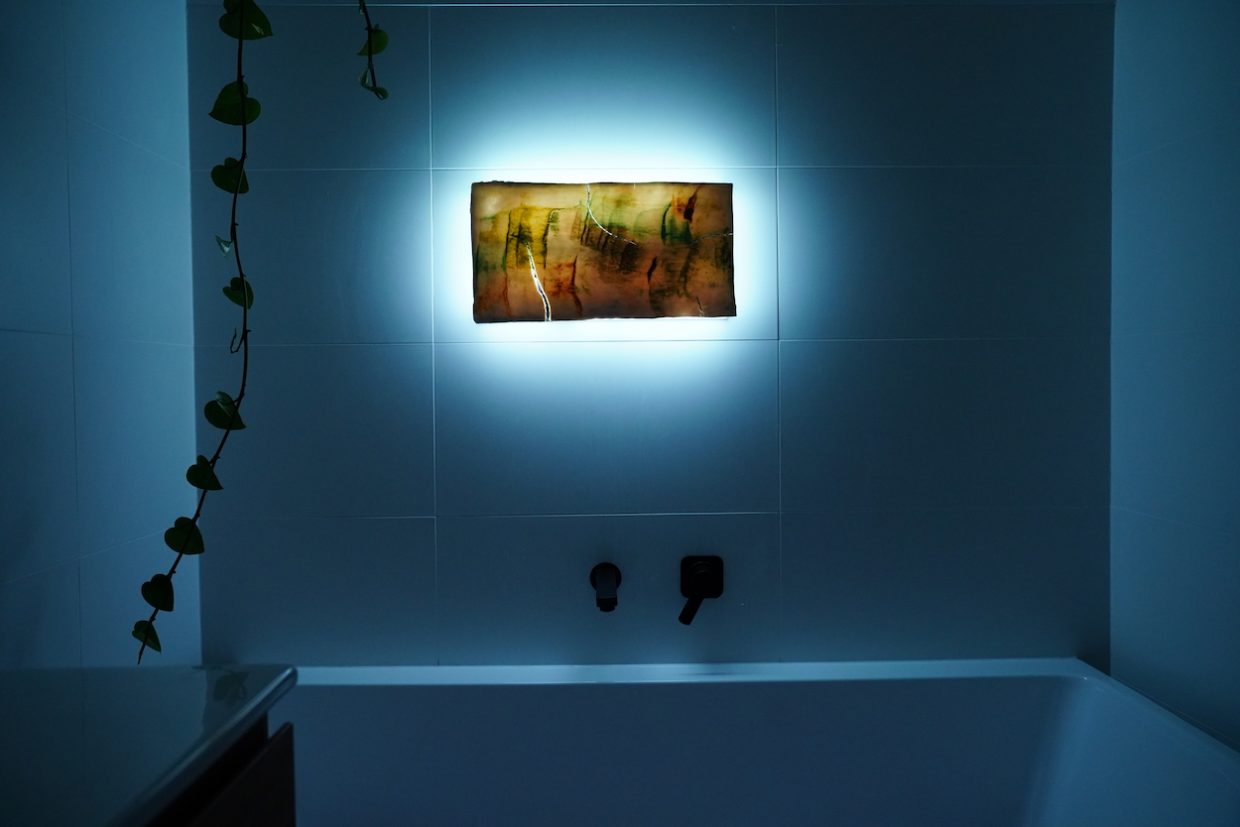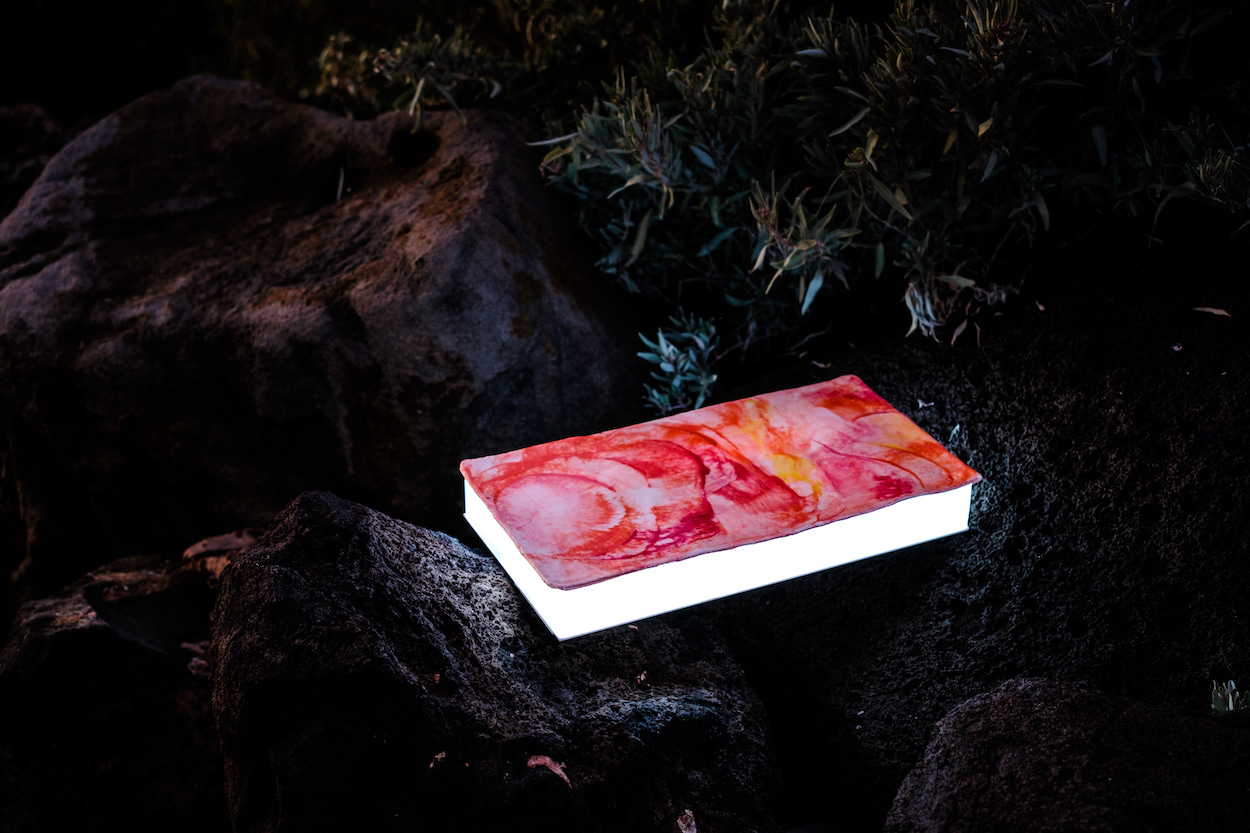Here, we ask designers to take a selfie and give us an inside look at their life.
Age: x + y
Occupation: Artist and designer.
Instagram: @sarahtracton
Hometown: Melbourne.
Studio location: Melbourne.
Describe what you make: I handcraft lighting by pouring porcelain slip layer by layer on plaster slabs, infused with iridescent colors. Twice fired to 1280 degrees, the porcelain sheets are dried slowly, sanded, glazed, and assembled into lamps, sconces, multiple configuration flat sheet, linear, chandeliers, and vertical pendants fitted with cordless technology and customized electrical components.
The most important thing you’ve designed to date: TriVertex. A light that achieves a balance of three porcelain cylinders, while powered through a near-invisible single slimline suspension system. The cordless technology creates a minimalist floating effect, eliminating the distraction of unsightly flex cords.
Not tripping on my way to the kiln is always a feat in itself. The lights are more fragile than egg shells at their raw, greenware stage Porcelain is an exquisite, yet challenging material to craft with as it’s so sensitive to temperature shifts and humidity. Negotiating the tenuous balance between clay and air to handcraft large cylindrical forms that balance precariously on their thin bases without toppling over is humbling.
Describe the problem your work solves: Lighting as art. The concept of creating functional art captivates me. Upon realizing the diaphanous translucency of porcelain when honing my poured plaster technique at the National Art School, lighting was the next obvious step. Each fired surface has unrepeatable characteristics and luminosity. It lacks the symmetrical geometry found in mass-produced lighting, but with imperfection comes idiosyncrasy. I love exploring the infinite possibilities of Australian porcelain, which has ethereal, translucent celestial qualities when internally lit.
Porcelain is an exacting material to handcraft because it’s prone to fracture caused by stress due to thermal expansion and contraction when fired at high temperatures. Instead of throwing the cracked porcelain away, I use the kintsugi technique to restore ‘trash’ into a functional light. The golden scars of transformed ceramic imbue a new kind of beauty, staving off wastage by transforming broken material into a multifaceted work of art. This process of repair, recycle, and reuse combats the environmental impacts of wastage with the circular economy. Through the repair of precious material, the mission is to salvage instead of discard.
Describe the project you are working on now: As a finalist for Australia’s Next Top Designer, I’m preparing new lighting for an exhibition at Design Show Australia, which is so exciting.
A new or forthcoming project we should know about: A solo exhibition entitled Light Permeates Silence, at Glowing Structures Gallery (Oct. 29–Nov. 16) in South Yarra, with a launch event on Nov. 4. Multiple prismatic configurations of my flat-sheet lighting, self-mountable battery rechargeable wall lights for the exhibit.
What you absolutely must have in your studio: Natural light. Snacks. Tape measure. Solitude.
What you do when you’re not working: In nature. Reading. Training as a Chef. Ceramics is a collision of water, heat, and atmosphere, which is very much like the cooking process. The kitchen brings new insights to my clay process and vice versa.
Sources of creative envy: Felines. Hyper-focused on playful tasks without distraction, they easily experience flow states. The best art is achieved in a state of hypnotic absorption in the moment. Complete immersion. It’s what I aspire to.
The distraction you want to eliminate: Screens.
Concrete or marble? Marble.
High-rise or townhouse? Mid-rise with floor-to-ceiling windows.
Remember or forget? Remember.
Aliens or ghosts? Aliens.
Dark or light? Chiaroscuro.

